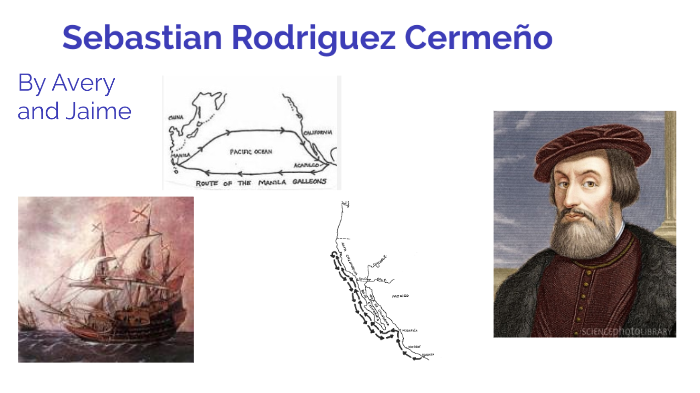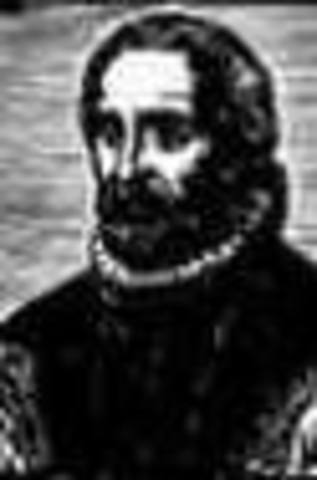America’s Whispering Shores: The Enduring Echoes of Legend
America, a continent born of discovery and reinvention, is not merely a landmass defined by rivers and mountain ranges. It is, perhaps more profoundly, a vast tapestry woven from dreams, fears, and the inexorable human need to make sense of the unknown. From ancient indigenous tales of creation to modern cryptid sightings, the legends of America form an invisible bedrock, shaping its cultural identity as surely as any historical event. These are not just quaint stories for children; they are the vibrant, living archives of a nation’s soul, continually whispered on its winds and etched into its collective memory.
Our journey into these legends might begin, fittingly, at a point of embarkation and shipwreck, with a figure whose own quest for a mythical passage led him into the very heart of the continent’s nascent folklore: Sebastião Melendez Rodriguez Cermeño. In 1595, Cermeño, a Portuguese navigator in the service of Spain, sailed the Manila galleon San Agustín along the treacherous California coast. His mission: to find a suitable port for the galleons and, crucially, to locate the fabled Strait of Anián – a mythical waterway believed to connect the Pacific and Atlantic oceans, promising an expedient passage to Europe. Cermeño’s search for this legendary shortcut epitomizes the early European encounter with America: a blend of scientific exploration and the fervent belief in geographical myths, driven by the allure of the unknown.
His ill-fated voyage ended in disaster near what is now Drakes Bay, north of San Francisco. The San Agustín was dashed against the rocks, its cargo of precious silks and porcelain scattered across the seabed, and Cermeño and his crew were forced to construct a smaller, open boat, the San Buenaventura, to make their arduous journey south to Mexico. The wreckage of the San Agustín, and its scattered treasures, immediately became a source of local legend, whispered among the indigenous Coast Miwok people and later by European settlers. For centuries, tales of Spanish gold and ancient artifacts lay hidden beneath the waves, fueling treasure hunts and archaeological quests, proving that even a failed search for one legend can birth another. Cermeño’s very presence, searching for a phantom strait, cemented his place not just in history, but in the evolving legendscape of America.

The Ancient Voices: Indigenous Legends and the Land’s Soul
Long before Cermeño’s ill-fated search, the lands of America were alive with stories. The indigenous peoples, diverse in culture and language, shared a profound connection to the land, their legends often serving as origin stories, moral lessons, and explanations for natural phenomena. These narratives predate European arrival by millennia, representing the continent’s most ancient and enduring folklore.
For the Navajo, the world was brought forth by the Holy People, culminating in the emergence of humanity from a series of lower worlds into the current one, guided by figures like First Man and First Woman. The Cherokee speak of the Earth Diver, a water beetle who brought up the mud that formed the land. Trickster figures like Coyote (prominent in many Western tribes) and Raven (among Pacific Northwest peoples) embody both wisdom and folly, their mischievous acts often leading to the creation of stars, fire, or the very shape of the landscape. These stories are not mere fables; they are sacred texts, blueprints for living, and deep ecological wisdom passed down through generations.
Then there are the more ominous figures: the Wendigo of Algonquian lore, a monstrous spirit driven by insatiable hunger, often associated with cannibalism and winter starvation, a chilling metaphor for the dangers of greed and isolation. The Thunderbird, a powerful spirit-bird found in the traditions of many tribes, controls storms and embodies immense power, its wings creating thunder and its eyes flashing lightning. These powerful figures demonstrate the indigenous understanding of nature’s awe-inspiring, and sometimes terrifying, might. Cermeño, navigating these shores, was utterly unaware that the land beneath him hummed with such ancient, resonant narratives, stories that painted the very trees and rocks with meaning.
Colonial Shadows: European Myths in a New World
The arrival of Europeans, like Cermeño, brought a new layer of legend to the American continent. Their own folklore mingled with their experiences in a "New World," giving rise to unique narratives. The search for the Strait of Anián was just one of many geographical myths that propelled exploration; others included the Seven Cities of Gold (Cíbola), the Fountain of Youth, and El Dorado. These legends were not just tales; they were powerful motivators, driving men to cross oceans and conquer vast territories in pursuit of fantastical riches or eternal life.
The struggle to tame a wild continent also birthed new legends, often tinged with fear and the supernatural. The Salem Witch Trials, though a historical event, became fertile ground for tales of spectral torment, demonic pacts, and the enduring power of communal hysteria. In the Hudson Valley, Washington Irving’s "The Legend of Sleepy Hollow" immortalized the Headless Horseman, a spectral Hessian soldier forever searching for his lost head, a potent symbol of colonial anxieties about the untamed wilderness and the ghosts of war. The Lost Colony of Roanoke, where an entire English settlement vanished without a trace, leaving only the cryptic word "CROATOAN," remains one of America’s most enduring historical mysteries, a legend born from the chilling unknown. These stories reflect the anxieties of settlement, the struggle against the wild, and the clash of cultures.
The Frontier’s Tall Tales: Larger-Than-Life Heroes

As the young United States expanded westward, the vastness of the frontier became a crucible for a new breed of legend: the American tall tale. These stories, often exaggerated to incredible proportions, celebrated the pioneering spirit, the taming of the wilderness, and the creation of a distinctly American identity.
Figures like Paul Bunyan, the colossal lumberjack whose mighty axe cleared entire forests and whose blue ox, Babe, carved out rivers and lakes, embody the sheer scale of the nation’s ambition and the Herculean labor involved in its development. Johnny Appleseed, a gentle nurseryman who roamed the Midwest planting apple trees, became a symbol of industriousness, ecological foresight (however unintentional), and quiet benevolence. Pecos Bill, the legendary cowboy who rode a mountain lion and wrestled cyclones, personified the rugged individualism and audacious spirit of the American West.
Alongside these benevolent giants emerged the legends of outlaws and folk heroes, figures who challenged authority and often met tragic ends. Jesse James, the notorious bank and train robber, became a romanticized figure of rebellion against powerful institutions, seen by some as a modern-day Robin Hood. Billy the Kid, a young gunslinger, was transformed from a petty criminal into an icon of youthful defiance and the violent allure of the frontier. These stories, whether of superhuman strength or human fallibility, served to define the moral and physical boundaries of a nation constantly pushing its limits.
Modern Mysteries: Cryptids, Conspiracies, and Urban Lore
In the 20th and 21st centuries, as technology advanced and society urbanized, the legends of America adapted. While the forests still whispered of ancient spirits, new mysteries emerged, reflecting contemporary fears and fascinations.
The elusive Sasquatch, or Bigfoot, a large, ape-like creature said to roam the Pacific Northwest wilderness, remains one of America’s most popular cryptids, a testament to the enduring human desire for the unknown to persist just beyond the edge of civilization. The Mothman, a winged creature with glowing red eyes reported in Point Pleasant, West Virginia, in the 1960s, became intertwined with a tragic bridge collapse, a chilling harbinger of disaster. The Jersey Devil, a creature with a horse’s head, bat-like wings, and cloven hooves, has haunted the Pine Barrens of New Jersey for centuries, a local legend blending Native American lore with colonial fears. These cryptids represent a modern wilderness, a place where the rational mind still grapples with the inexplicable.
The age of information also brought forth elaborate conspiracy theories, often blurring the lines between fact and fiction, giving rise to new legends. Area 51, a secret government facility in Nevada, became the epicenter of UFO lore, believed by many to house captured alien spacecraft and extraterrestrial beings. The assassination of John F. Kennedy, the moon landing, and other pivotal events have all spawned intricate legendary narratives questioning official accounts. These modern legends reflect a societal distrust of authority and a craving for hidden truths, often amplified by the rapid dissemination of information (and misinformation) through the internet.
The Enduring Echoes
From the mythical Strait of Anián that drew Sebastião Cermeño across an ocean to the elusive Sasquatch hiding in redwood forests, the legends of America are a continuous dialogue between the past and the present, the known and the unknowable. They are not static relics but dynamic narratives, constantly reinterpreted and reshaped by each generation.
Cermeño’s search for the Strait of Anián, a journey driven by the allure of a geographical legend, serves as a powerful metaphor for America itself: a nation constantly searching, exploring, and defining its own identity through its stories. His shipwreck, a historical fact, quickly became a local legend, a testament to the human tendency to imbue events with deeper meaning, transforming historical markers into cultural touchstones. The San Agustín, lost beneath the waves, became a silent testament to the powerful draw of the legendary.
These legends, whether ancient or modern, are more than mere entertainment. They provide comfort, warn against dangers, explain the inexplicable, and reinforce communal values. They are the collective dreams and nightmares of a diverse people, offering insights into their deepest hopes and fears. In America, the land still whispers with these stories, carried on the wind through canyons, echoing in the bustling streets of its cities, and finding new life in the digital ether. They remind us that while maps chart the physical world, it is legends that truly define the soul of a nation, forever guiding its inhabitants through the vast, mysterious landscape of human experience.



